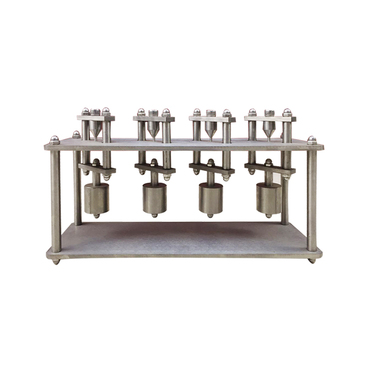Conductor Resistance Testing Equipment Production and Quality Assurance Solutions
Understanding Conductor Resistance Fixture Factories
In the world of electrical engineering and manufacturing, the quality of components used in circuits is essential for the overall performance and safety of devices. One of the key parameters that engineers monitor is the resistance of conductors. This brings us to the importance of conductor resistance fixture factories, which specialize in producing equipment designed to measure and analyze the resistance of various conductive materials.
What is a Conductor Resistance Fixture?
A conductor resistance fixture is a specialized tool used to determine the electrical resistance of a conductor under specific conditions. These fixtures are essential for ensuring that conductors meet regulatory standards and performance specifications. They are often used in laboratories, manufacturing plants, and quality control environments where precise measurements are critical.
The Importance of Measuring Conductor Resistance
Measuring conductor resistance is vital for several reasons. First, resistance directly affects the efficiency of electrical systems. High resistance can lead to increased power losses, heat generation, and even potential system failures. For instance, in power transmission lines, excessive resistance can lead to significant energy losses, impacting the overall efficiency of electrical distribution.
Second, the resistance of conductors can influence the safety of electrical devices. Conductors with high resistance can overheat, leading to failures or even fire hazards. For this reason, manufacturers must ensure that their conductors comply with required resistance standards throughout their lifecycle.
The Manufacturing Process of Conductor Resistance Fixtures
The manufacturing process for conductor resistance fixtures involves several key steps. First, the design phase includes the development of specifications that ensure the fixture will accommodate various conductor sizes and types. Engineers utilize computer-aided design (CAD) software to create precise models and functionality.
Once the design is finalized, high-quality materials are chosen to manufacture the fixtures. Materials such as aluminum, copper, and specialized alloys are often used due to their conductivity and durability. After sourcing the appropriate materials, the manufacturing process involves cutting, shaping, and assembling the individual components.
conductor resistance fixture factory

Quality control plays a significant role in the manufacturing process of conductor resistance fixtures. Each fixture undergoes rigorous testing to ensure accuracy and reliability. Manufacturers employ precise measuring instruments to assess the performance of the fixtures, verifying that they meet industry standards.
Applications of Conductor Resistance Fixtures
Conductor resistance fixtures find applications across various industries. In the telecommunications sector, for example, they are essential for testing low-resistance connections in data transmission systems. Similarly, in power generation and distribution, these fixtures ensure that busbars, cables, and connectors are functioning efficiently.
Furthermore, automotive manufacturers utilize conductor resistance fixtures to test wiring harnesses and electrical systems in vehicles. As electric and hybrid vehicles become more prevalent, ensuring the integrity of electrical connections is paramount for vehicle safety and performance.
Future Trends in Conductor Resistance Measurement
As technology advances, so do the methodologies for measuring resistance. The integration of digital technologies, such as IoT sensors and smart measurement devices, is transforming the way conductor resistance is tested and monitored. Real-time data collection and analysis enable manufacturers to ensure continuous compliance with resistance standards and improve overall quality control.
Moreover, the push for sustainability and energy efficiency is driving innovation in this field. Conductors that minimize energy loss can significantly contribute to greener solutions in various industries. Consequently, conductor resistance fixture manufacturers are evolving to meet these new challenges and demands.
Conclusion
In conclusion, conductor resistance fixture factories play a crucial role in the electrical engineering landscape. By ensuring accurate measurements of conductor resistance, they contribute significantly to the efficiency, safety, and reliability of electrical systems. As technology advances, the importance of these fixtures will only grow, paving the way for more innovative solutions in the quest for energy efficiency and safer electrical applications.
-
reliable-performance-testing-with-advanced-aging-chamber-solutions
NewsAug.23,2025
-
advancing-precision-with-profile-projector-technology
NewsAug.23,2025
-
uv-led-ultraviolet-crosslinking-technology-innovation-and-prospects
NewsAug.23,2025
-
ensuring-safety-and-compliance
NewsAug.23,2025
-
electrical-properties-testing-in-modern-applications
NewsAug.23,2025
-
universal-tensile-testing-machine-applications-in-modern-electrical-and-material-testing
NewsAug.23,2025
 Copyright © 2025 Hebei Fangyuan Instrument & Equipment Co.,Ltd. All Rights Reserved. Sitemap | Privacy Policy
Copyright © 2025 Hebei Fangyuan Instrument & Equipment Co.,Ltd. All Rights Reserved. Sitemap | Privacy Policy

